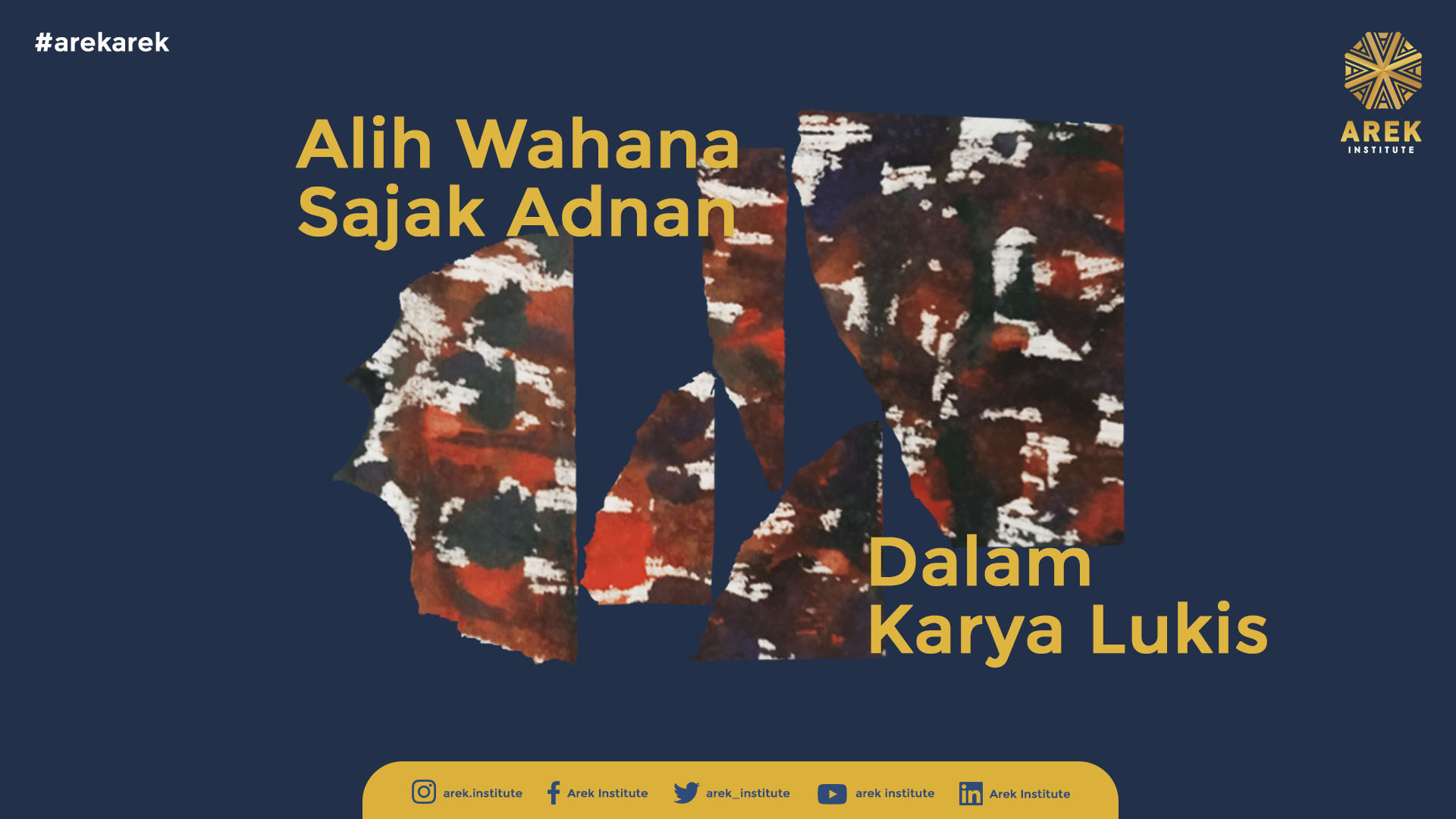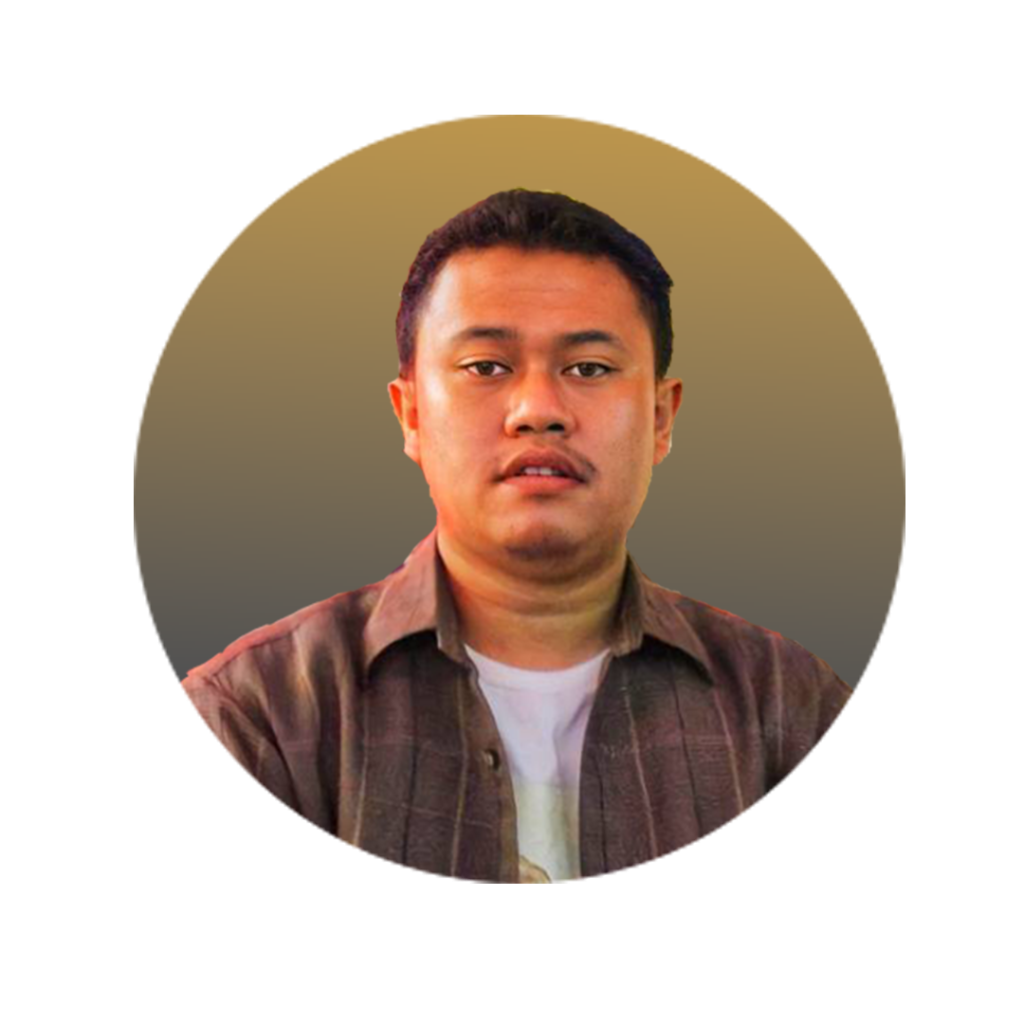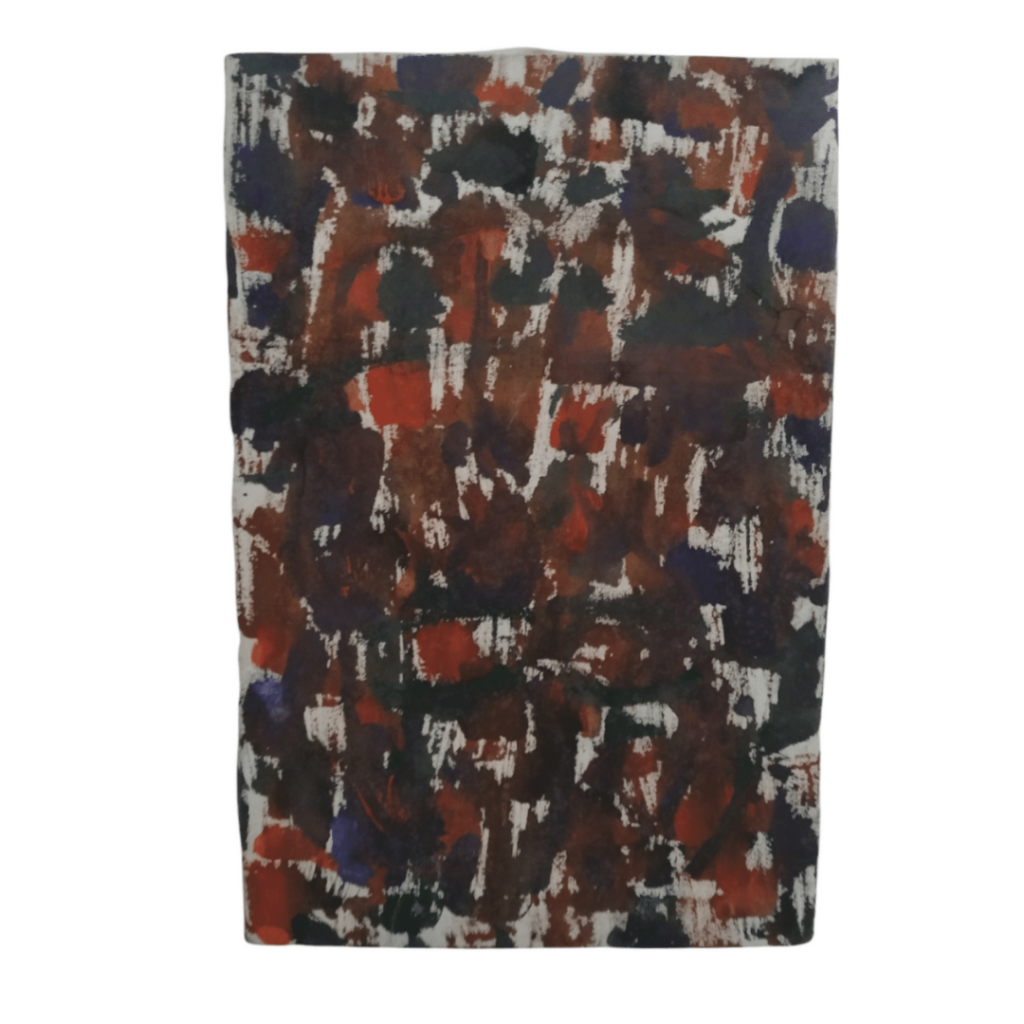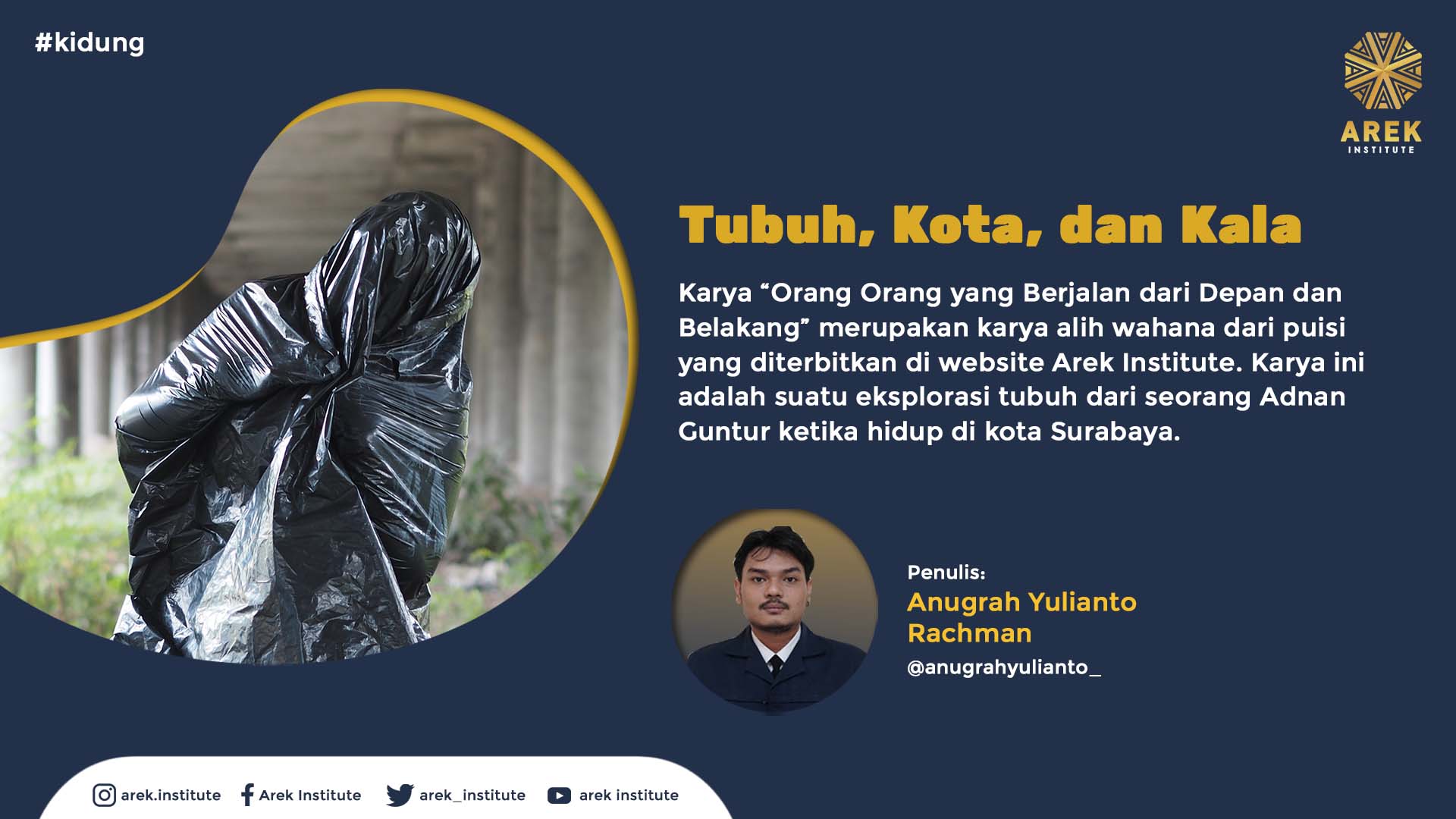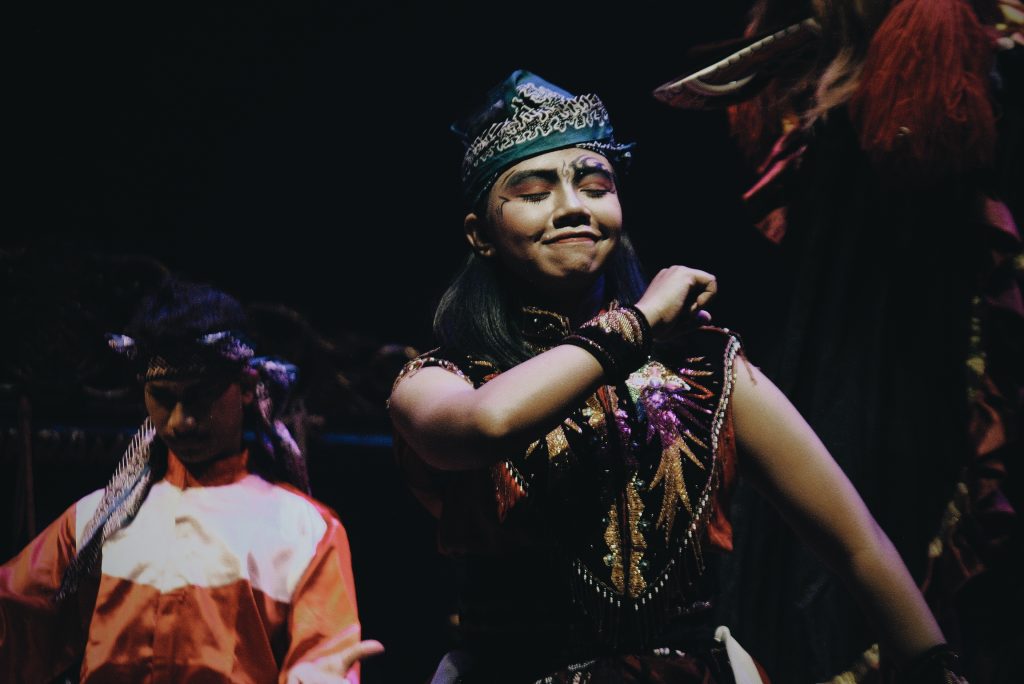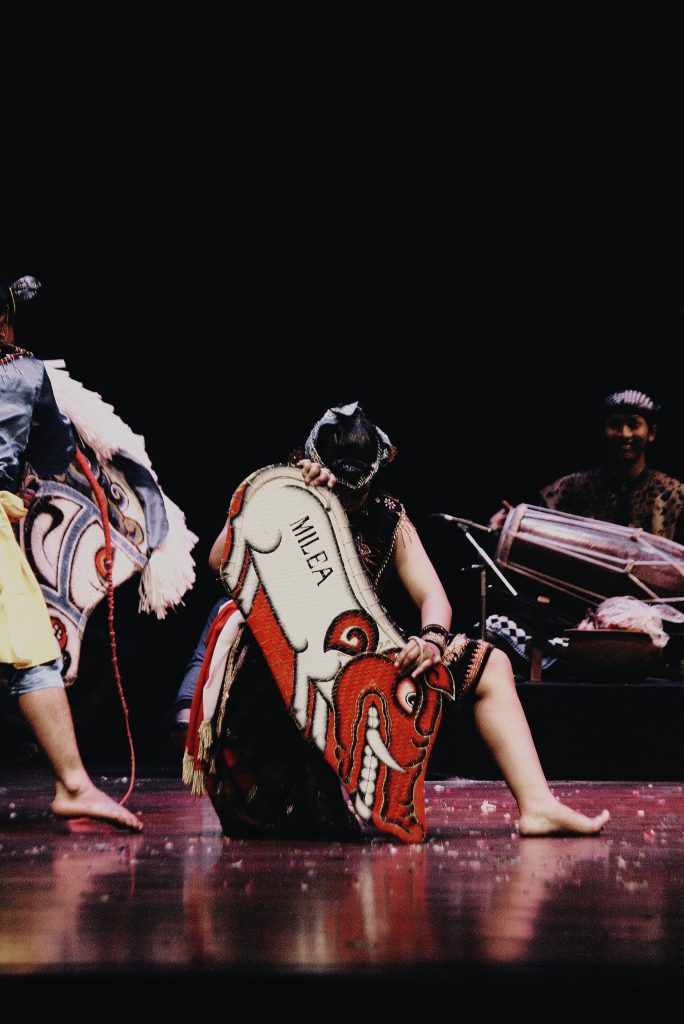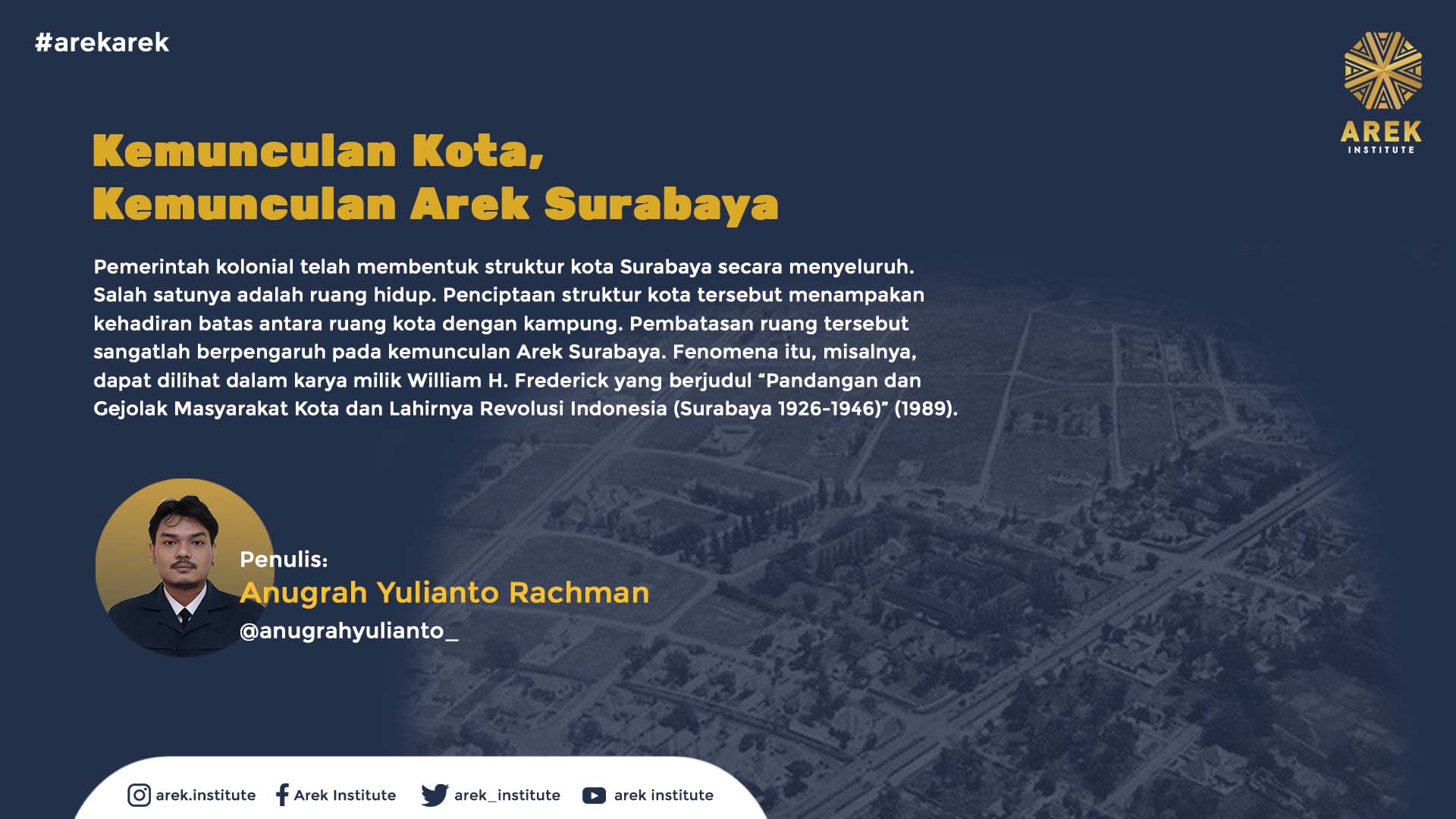The work “People Walking from Front and Back” is an adaptation from a poem published on the Arek Institute website. This piece is an exploration of the body by Adnan Guntur while living in the city of Surabaya. He records the turmoil and bustle of urban life he experiences. This is poured out from the lines of his poetry, and through body movements and the concept of a performance art video that he presented for the first time through Sanggar Arek.
The adaptation of this work was also assisted by visual videographer Bernadus Deo Puspito. Both Adnan and Deo worked on this video very seriously. They engaged in long dialogues and discussions before creating this work. Deo, as the producer-videographer of this work, successfully captured the dimension of confusion and the bustle of urban society because that is the crucial point of this project. In this work, the dimension of the body and the busyness of urban life are very apparent.
Broadly speaking, this work actually delivers a revisit to the poem by Afrizal Malna titled “The Century that Runs”. That work can be said to have thematic intersections with Adnan’s work, namely the busyness of society regarding routines that are artificial and the busyness of modern human work. Afrizal tries to capture the life of this modern century that places humans always chased by time.
“Time doesn’t want to stop, hammer.
Time doesn’t want to stop.
A thousand clocks point to different times.
Everyone walks on their own, hammer.”
Afrizal questions the life of modern society that is chased by time. Humans, as if, are placed by him as people living in a running century. Time doesn’t want to stop, and they are chased by it.
Different from Afrizal, of course, Adnan tries to absorb the busyness of urban humans with his body experience during his literary life in the city of Surabaya. His body is placed by him as a figure disgusted with the noise of urban life. This noise is brought up in the background of this video’s work, placed among busy streets. The background depicts the coming and going of people walking from front and back—consistent with the title of this work.
Meanwhile, his sense of disgust is shown in the facial expressions and body movements during short scenes in this video. Initially, he shows disgust in his facial expressions. Then, he walks very slowly, which is in stark contrast to the background of people walking fast and bustling. The slow movement of his body, while walking, is a stark contrast to the background that is very fast and busy. This simultaneously signifies that he wants to reflect on human movement.
In that section, Adnan seems to reflect on society’s life to re-examine the dimension of time. He seems to say, “Is it time that runs too fast, or is it me walking too slowly?”. It shows a question about the life of urban society that has been shaped in such a way by their respective busyness. They walk on the streets as if being chased by a giant figure, wanting to hunt them, named Kala. Everyone is running from it, bustling in the streets.
Talking about time, this issue has not only been discussed by poets like Adnan or Afrizal. A renowned musician, Ebiet G Ade, for example, in his work titled “Menjaring Matahari” (Catching the Sun), also presents a reflection of human life on time. He questions the movement of time that increasingly crushes human life.
“The wheels of time crush us
Dragged staggering
Indeed, life is constantly pursued
Racing against time”
However, Ebiet is very pessimistic in viewing time because humans seem to be experiencing a disaster because of it, and nothing can save them. He wraps it with a religious spice that only God can save humans.
Besides the matter of time, there is a dimension of rebellion brought up in this work. This becomes more tangible when Adnan starts to put a black plastic bag over his body. This simultaneously indicates a rise in tension from the dynamics of this performance. The plastic covers half of his body. After walking very slowly, Adnan wears the plastic, and he begins to move his hands and head. His body seems to want to rebel to break free from something that shackles him. He keeps walking until he gets smaller and sits with the plastic covering his entire body.
The camera then focuses more on his body rebelling against something that entirely shackles him. His body is not visible. All that is there is the black plastic wrapping his entire body. No matter how hard he rebels, the plastic still covers him. The scene becomes more intense and tense. However, eventually, the body stops rebelling. It just lies down. Surrendering itself and defeated by the object attached to his body.
Perhaps, Ebiet is right that no one can fight against time. Similarly, with Adnan in this performance. He is powerless. No matter how much he rebels, he is still subdued. He is devoured and can only surrender his body to time. His body lies powerless. Humans can only rebel against time until they are defeated by themselves. Such defeat comes when he clings to death. The final part of this performance wants to say just that.
At least, his body has tried to rebel against those shackles. Even though he lies stiff, defeated by Kala, he has attempted to fight back.
